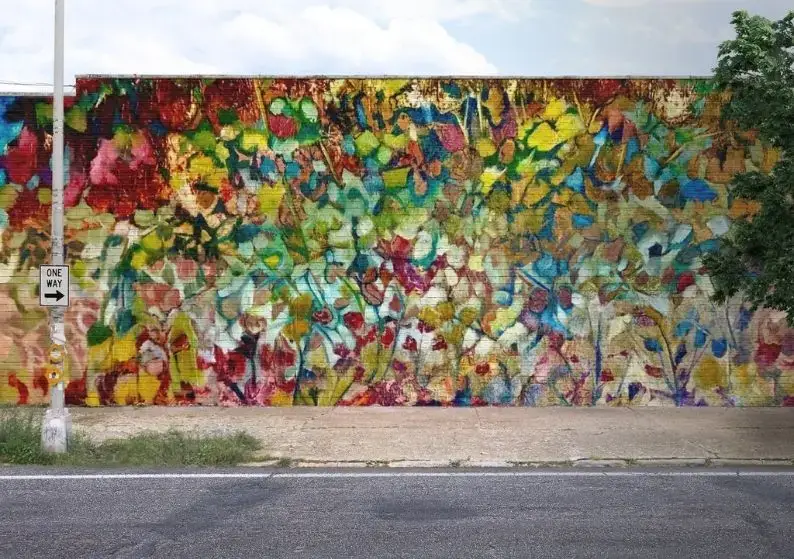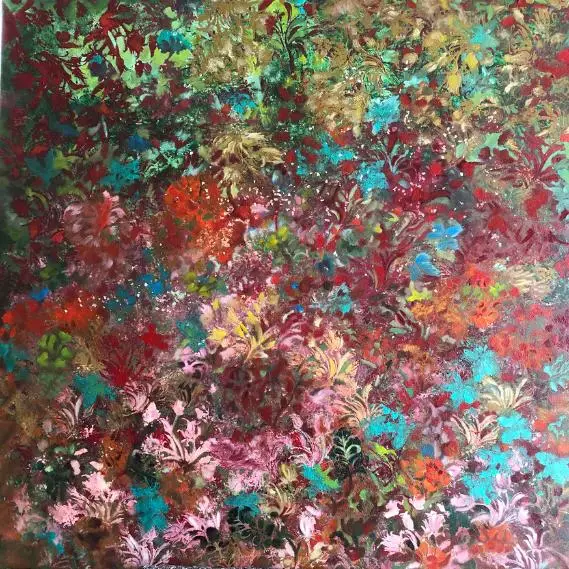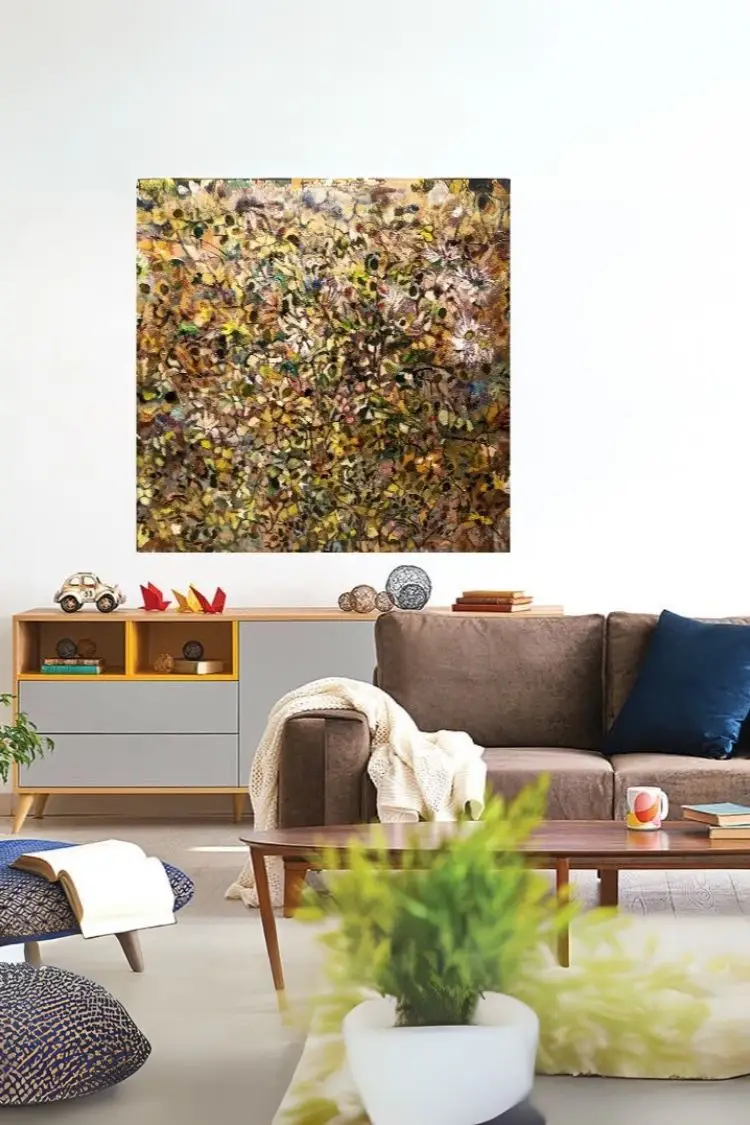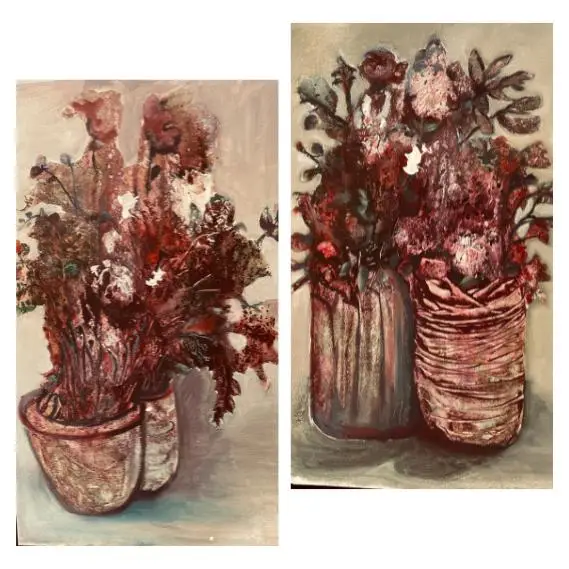
Abstract art expresses emotion, rhythm, and inner experience through colour, texture, and form rather than realistic depiction. It reflects the artist’s emotional world and invites viewers to connect through intuition, feeling, and personal interpretation.
Abstract art transforms colour and movement into a universal visual language of emotion and imagination — inviting you to experience rather than simply observe.
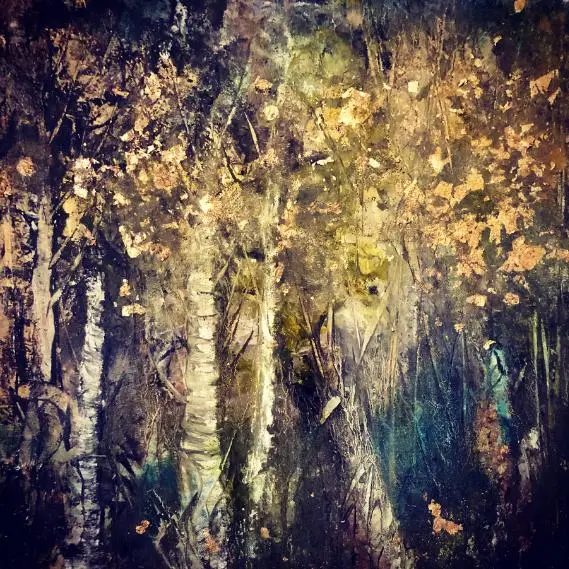
Abstract art has always spoken to me in a way that realism never could. It’s not about what you see — it’s about what you feel. Through abstraction, we step away from representation and explore emotion, rhythm, and the invisible patterns that shape life itself.
As an artist, I see abstraction as an emotional mirror. Every brushstroke carries energy, intention, and time. Abstract art doesn’t ask for explanation — it asks for presence. When I paint, I translate sound, movement, and inner rhythm into colour and texture. The process feels more like composing music than painting an object.
That’s why collectors are drawn to it again and again. A meaningful abstract painting evolves — it breathes differently each day you live with it. It doesn’t demand attention; it creates space for reflection and emotion.
If you’d like to explore that experience more deeply, I share a simple viewing method in my post on mindfulness and art.
At its heart, abstract art replaces representation with expression. It speaks in a visual language of colour, form, and rhythm. Instead of showing what something looks like, it reveals what it feels like.
When I begin a painting, I rarely start with a sketch. I start with sound — music, breath, or emotion — and translate that rhythm into motion on the canvas. Each layer of paint becomes a layer of thought and time. When you step back, you can see the traces of those moments colliding, creating something that feels alive.
In an upcoming post, I’ll share more about the psychology of abstract art and how our brains and emotions instinctively respond to colour and shape — often before conscious thought even begins
Colour has always been at the centre of my work. It’s a vocabulary of feeling.
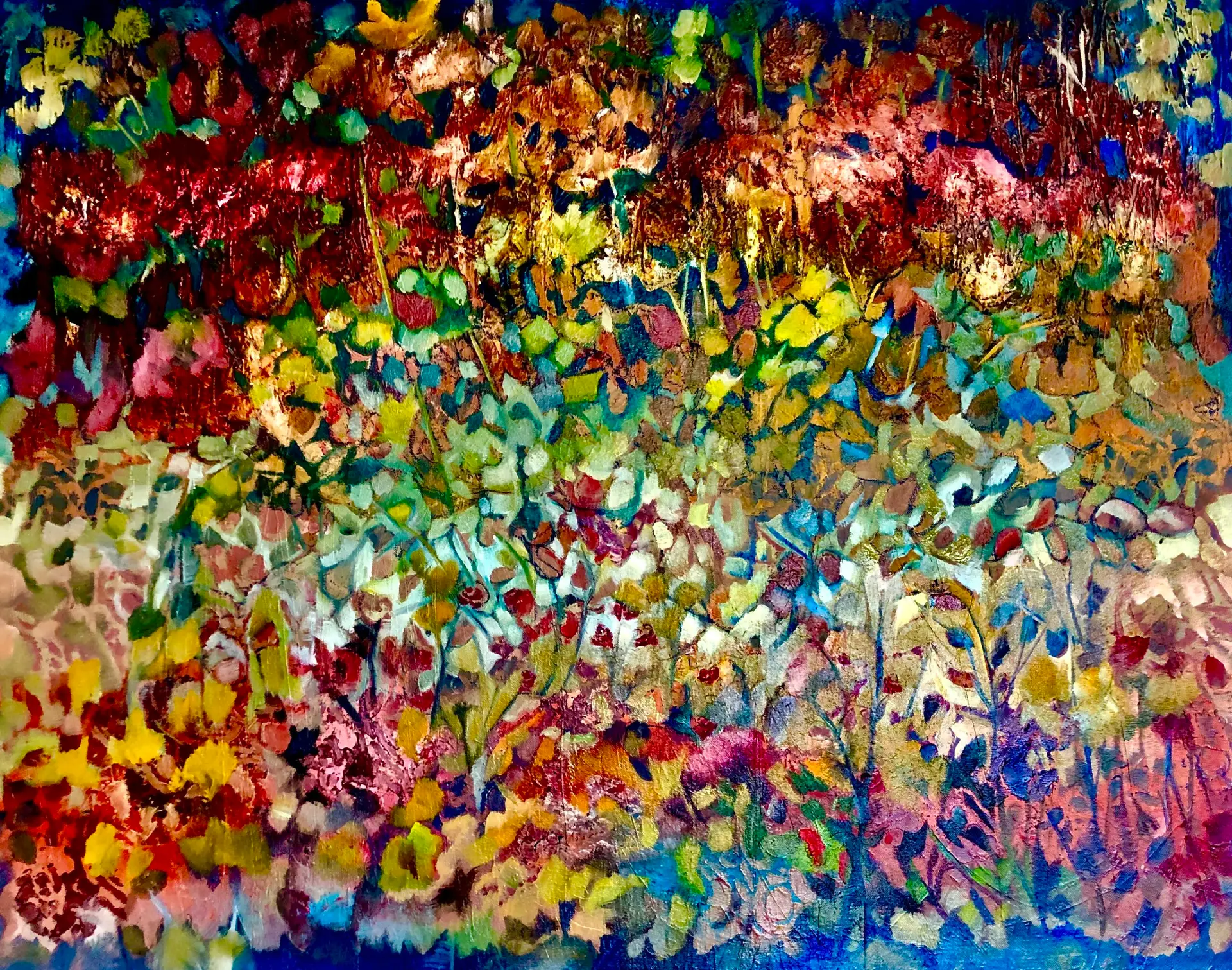
Each tone changes meaning depending on what surrounds it. That’s why two similar paintings can feel entirely different depending on light and contrast.
In one of my earlier reflections on the beauty of colour and emotion, I described how hues can form emotional harmonies—just like music. It’s a dance between tension and balance, vibration and stillness.
Line and texture add rhythm. A sweeping curve suggests ease; jagged edges create movement; thick paint holds memory. Even empty space is expressive—it’s where your eyes can rest and breathe.
One of the most common questions I hear from collectors is: “How do I understand abstract art?”
The answer is simpler than most expect—you don’t have to “understand” it. You just have to be with it.
Here’s a small mindful exercise I often suggest:
This kind of presence transforms viewing into connection. If you’d like a deeper approach, my article on art and mindfulness explores how awareness enhances emotional engagement.
Each abstract piece begins in uncertainty. I start with chaos — mark-making, spontaneous gestures, and colour layers that may later disappear beneath new ones. Over time, the painting finds its own balance.
This dialogue between chaos and order is central to my philosophy. I’ve written before about how chaos influences creativity, and that tension — between unpredictability and intention — gives abstract work its heartbeat.
Texture is another language. Palette knives, brushes, and even my hands create surfaces that catch light in different ways. Acrylics allow for quick layering and crisp energy, while oils invite slow, deep blending. If you’re curious about how medium affects mood, I discuss it in a post comparing different painting mediums.
Collectors are drawn to abstract art for the same reason I create it — it holds emotion in form. When I help someone choose a painting, we always begin with feeling.
Ask yourself:
Each artwork carries its own resonance. Some pieces are quiet and meditative; others vibrate with movement. When those harmonies align with your space and spirit, the result feels effortless.
For guidance on choosing the right piece, I share design-focused insights on decorating with wall art, exploring placement, size, and emotional impact.
And if you’re in London, you might enjoy my upcoming article on how abstract art enhances modern interiors and city light, where I’ll explore how abstract art interacts with urban light, architecture, and modern interiors
Science supports what many art lovers already know: colour, pattern, and rhythm influence our emotions instantly. We respond to hue and shape before our minds even form words.
This happens because the brain’s visual and emotional centres are closely linked. When you see a deep blue, your limbic system may trigger calm or reflection; when your eyes meet a vivid orange, energy and warmth rise before you even realise it. These reactions are primal — part of how we interpret the world through feeling.
That’s why abstract art feels so immediate. You don’t need to interpret a symbol or recognise a figure; you simply feel. Colour speaks directly to your nervous system, and composition guides your attention the way rhythm moves you in music.
For some viewers, this experience is meditative; for others, it’s invigorating. A single composition can evoke calm in one person and curiosity in another — and both responses are true. Abstract art invites each of us to bring our own stories to it. It’s a mirror, not a message.
When I create, I think of this as a quiet dialogue between artist and viewer — an exchange of energy. The work carries my rhythm and emotion, but the moment you stand before it, it becomes yours too. That connection — felt before thought — is what makes abstraction timeless.
People often ask whether abstract art is a good investment. My answer is yes — but not only financially. The real value lies in the relationship you build with the work.
A painting you love becomes part of your daily landscape. It shapes the atmosphere of your home and how you feel within it. That emotional bond often outlasts trends or markets.
For those beginning their collecting journey, my guide on investing in abstract art explains how to recognise quality, originality, and lasting value—without losing the emotional connection that makes collecting meaningful.
If you’re considering your first purchase, you might also enjoy my post on buying original works, which breaks down what to look for when choosing a piece that will stay with you for years.
I also create one-of-a-kind works through my commission process, where clients and I collaborate to translate feeling, colour, and story into a deeply personal artwork. Learn more about how to commission a custom painting.
Many people see abstract and figurative art as opposites, but they’re really two dialects of the same language. Figurative art describes what we see; abstract art describes how it feels.
I often encourage collectors to mix both styles. A soft portrait beside a bold abstract canvas creates dialogue between emotion and form—between the seen and the sensed. That balance can completely transform how a room feels.
Many people see abstract and figurative art as opposites, but they’re really two dialects of the same language. Figurative art describes what we see; abstract art expresses how it feels.
I often encourage collectors to combine both styles. A soft portrait beside a bold abstract canvas creates a dialogue between emotion and form — between the seen and the sensed. That balance can completely transform the atmosphere of a room.
Living with abstract art transforms space into a story. It shifts how light plays on the walls, how you feel in a room, and even how you pause.
I’ve seen collectors experience profound calm after introducing a large, tranquil piece to a busy space. Others find energy and inspiration in vibrant, layered works. The best art adjusts to you—it grows with your seasons of life.
Abstract art continues to move us because it exists beyond narrative or fashion. It lives in emotion — the most timeless language of all.
When I paint, I’m not just building an image; I’m translating the invisible — sound, breath, and silence — into form. Each work becomes an emotional map, a trace of presence.
For viewers, that presence invites openness. You don’t have to decode it; you only have to feel it. That moment of recognition — the soft “yes” inside — is where connection begins.
If this piece has inspired you to explore abstract art further, I invite you to experience my current collection — a curated selection of original works that express energy, stillness, and emotion through colour and form. Shop now to bring meaningful art into your home.
Each painting begins with a conversation — about mood, story, and space — so that what hangs on your wall becomes more than decoration; it becomes dialogue.
Reach out via email, phone, or social media to connect directly with Shadi. Every conversation begins with curiosity and ends with creativity — because art is always a dialogue.
No matter where you are on your art journey — a seasoned collector, an art lover, or someone discovering the beauty of expressive painting for the first time — Shadi is here to help bring inspiration to your space. Let’s create something extraordinary together
Contact us now to begin your artistic journey with Shadi Mahsa Art.
Abstract art is a style; modern art is a broader movement that includes many styles. Abstract art focuses on form, colour, and emotion rather than realism, and it continues to evolve within contemporary practice.
Look for balance, originality, and energy. Strong abstract art feels intentional, even when it’s spontaneous. The composition, rhythm, and layering should feel cohesive rather than random.
Absolutely. Abstract art is incredibly adaptable — it can soften minimalist interiors or bring vibrancy to classic spaces.
Yes — and that’s the beauty of it. Abstract art invites personal interpretation. Your emotional response becomes part of the artwork’s story. Each viewer’s perspective keeps the piece alive.
Yes. I offer bespoke commissions through my Custom Painting Service. Together, we collaborate on mood, palette, and scale to create a painting that feels deeply personal and designed for your space.



